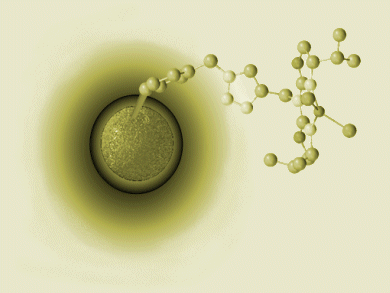Catalysis is among the most important applications within the field of nanoscience. Nanoparticles can serve as semi-heterogeneous supports because they readily disperse in common solvents and combine high surface areas with excellent accessibility. Reversible agglomeration through solvent changes and magnetic separation provide technically attractive alternatives to classical catalyst filtration.
This Review article by W. J. Stark et al. from Zürich, Switzerland, places an emphasis on recent developments in this emerging area, including a discussion of monolayer-protected gold clusters, gold nanoparticles with mixed monolayers, ferrite nanoparticles, dopamine-capped ferrite nanoparticles, silica-coated ferrite nanoparticles, and carbon-coated metal nanoparticles.
Huge efforts have been placed in the development of systems that minimize the influence of the support on the catalyst and are capable of efficient recycling at the same time. Catch–release systems might be a promising tool en route to catalysts that are actually homogeneous and not only “semi-heterogeneous”. Overall, the field of nanocatalysis is expanding dramatically, and most novel nanosized materials and applications are yet to be explored.
- Nanoparticles as Semi-Heterogeneous Catalyst Supports
A. Schätz, O. Reiser, W. J. Stark,
Chem. Eur. J. 2010, 16 (30).
DOI: 10.1002/chem.200903462





I agree with Dr.Laurie Starkey that is a very interesting and large perspective-organic chemistry.